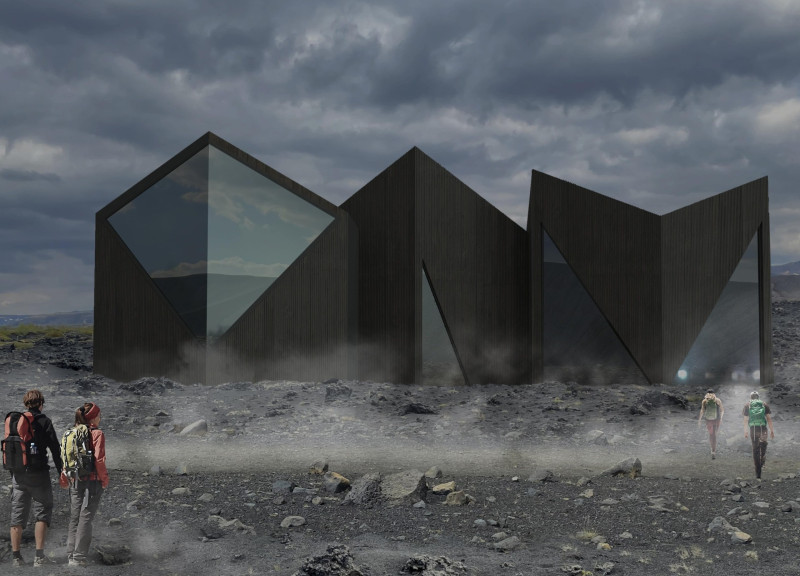5 key facts about this project
JLava is a coffee shop located at the foot of Hverfjall volcano in Iceland, combining coffee culture with the powerful character of its environment. The design focuses on the interplay between the building and its natural surroundings, creating a space that serves both coffee and educational displays about the local geology. Visitors experience a strong connection to the volcanic landscape while enjoying a casual atmosphere.
Architectural Concept
The design of JLava is inspired by the active volcanic landscape around it. Features include irregular shapes and a series of linked modules that resemble traditional Icelandic peat houses. This choice reflects a commitment to local architecture while presenting a modern twist. The roof has multiple slopes, echoing the natural lines of the terrain and enhancing the relationship between the structure and the landscape.
Materials and Sustainability
The building incorporates Cross-Laminated Timber (CLT) for its structural components, highlighting a focus on sustainability. This material choice supports an eco-friendly approach while creating a warm, inviting space. Additionally, the use of ecological cellulose insulation improves energy efficiency, contributing to a comfortable indoor environment without sacrificing environmental responsibility.
Interior Design Elements
Inside, the café area features many potted coffee plants, immersing guests in the coffee experience. This greenery not only beautifies the space but also encourages a climate of connection with nature. In contrast, the museum area adopts a minimalist appearance, guiding attention toward the volcanic exhibition and providing educational insights about the geological history of the region.
Design Features
A significant detail is the fire pit located at the entrance. It serves as a gathering spot for visitors, enhancing outdoor interaction and fostering a sense of community. The combination of dark wood on the exterior with the lively green of the plants creates a balanced visual appeal. The design effectively emphasizes the relationship between the structure and the natural volcanic landscape, inviting exploration and engagement.





















































